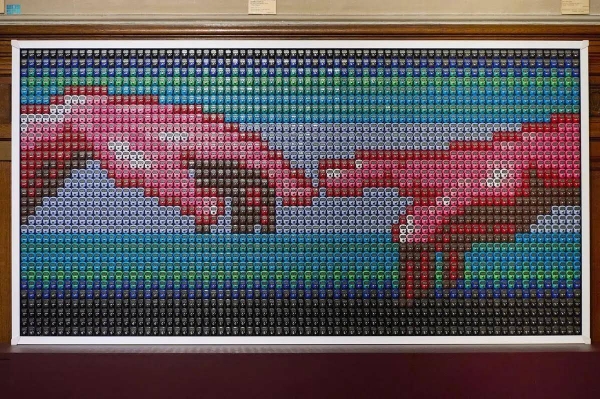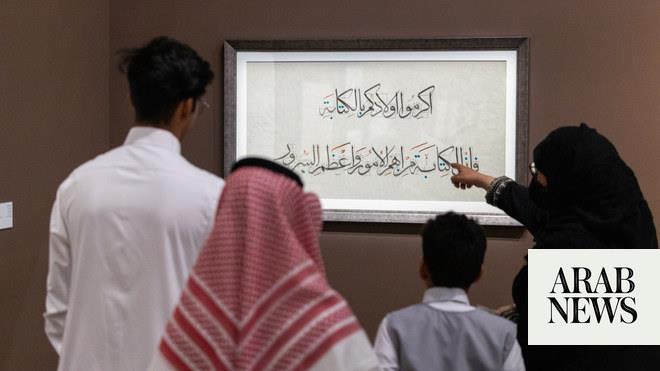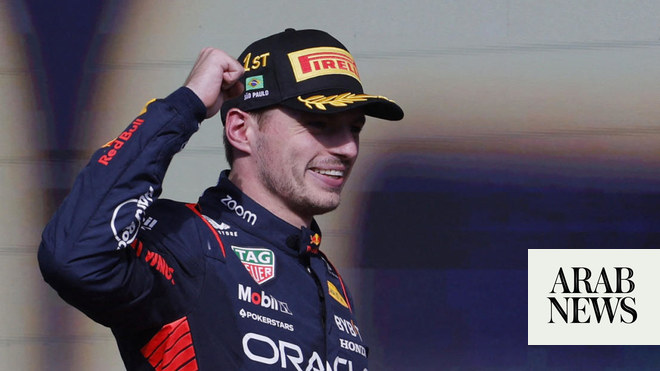
For ‘There Is Fiction In The Space Between,’ the gallery paired works from its artists in various — and surprising — ways
DUBAI: 2020 is a “momentous” year for Dubai-based gallery The Third Line, head of exhibitions Sybel Vasquez tells Arab News. In March, the gallery was set to celebrate its 15th anniversary. The COVID-19 pandemic meant that plans had to be changed — and quickly. Like many other galleries and museums around the world, The Third Line took its exhibitions online. But it was still important to mark the anniversary with something special.
For the latest updates, follow us on Instagram @arabnews.lifestyle
“I had to think of a way to bring together all of the artists that the gallery had successfully represented and nurtured over the years while also taking a deep and meaningful dive into the breadth of its program,” Vasquez explains. “There was no easy way to do this without risking a sensory overload.”
Vasquez came up with the idea of pairing selected works from the gallery’s roster of artists. “I had been very interested in the way artworks are selected and put together for exhibitions, and the dialogue that is intended between them by the curators,” she says. “It was important to steer clear of a hefty concept and give way instead to something more personal, like the imagination. It was also very exciting to look at artworks which would likely never have been shown together otherwise.”
Vasquez is keen to stress that there is “no right or wrong way to interpret the paintings.” The pairings are intended to spark contemplation and curiosity — not necessarily as puzzles to be solved.
“What ties them together is the concepts that they bounce off each other, as if in each pairing was an exhibition of its own,” she says. “There are clues, certainly, but these can take you any way you choose.”
The title of the exhibition is another indication of the intent behind it. “There Is Fiction In The Space Between” (which can be viewed online until the end of May) is, Vasquez explains, a line from a Tracy Chapman song (“Telling Stories”).
“I love this song, and that line prompted me to think of exhibitions as a more ludic experience. It’s also important to think of a title (to) serve as the first and most important clue as to what the exhibition might be about. I thought this title would do just that.”
Here, Vasquez talks us through some of the pairings on show in the exhibition.
Sophia Al-Maria & Abbas Akhavan
The two Sophia Al-Maria prints selected for this pairing (‘Certified’ and ‘Greenhouse Glow’) were taken from a larger series where the artist looked at 21st-century hyper-consumerist behavior by juxtaposing military words with cosmetic vernacular. The result is ironic. Abbas Akhavan often looks at nature and various habitats to investigate society’s behavior within itself and towards its environment — so his practice is not too dissimilar, but comes from a very different angle. I pulled two of Sophia’s prints that alluded to the environment and — next to Abbas’ ink drawing of a palm leaf — let it become something else to ponder over.
Farah Al-Qasimi & Youssef Nabil
They are both photographers — their respective practices pivot around the investigation of portraiture and tradition. Yet the pairing of these two artworks couldn’t be more ironic — although you have to look at the title of Farah’s work (“Curtain Shop”) against Youssef’s portrait of Alicia Keys to find the irony...
Rana Begum & Farhad Moshiri
From an aesthetic standpoint the two works could have been created together intentionally, but their respective methods tell a different story. On the one hand you have Rana Begum’s reflectors, which evoke industry and minimalism, while Farhad Moshiri’s “Blocks” was made using the technique of hand-embroidering beads — a traditional method he’s used in a lot of his work to illustrate the cultural dichotomy of contemporary Iran.
Jordan Nassar & Tarek Al-Ghoussein
This pairing was very unexpected but extremely exciting because it was coincidental. I found that, in both works, the artists had captured, or represented, an idyllic fictional landscape. And, in both works, that landscape sits in a rectangular frame amidst a monochromatic surrounding.
Slavs And Tatars & Fouad Elkoury
Fouad Elkoury’s work often documents the tender, tragic and sometimes ironic marks we leave on the spaces we inhabit or leave behind. And I thought this particular photograph was a great illustration of Slavs & Tatars’ series “Love Letters” in which they explained they investigate language “as a source of man’s greatest achievements and yet a cause of his tragic failures.”












